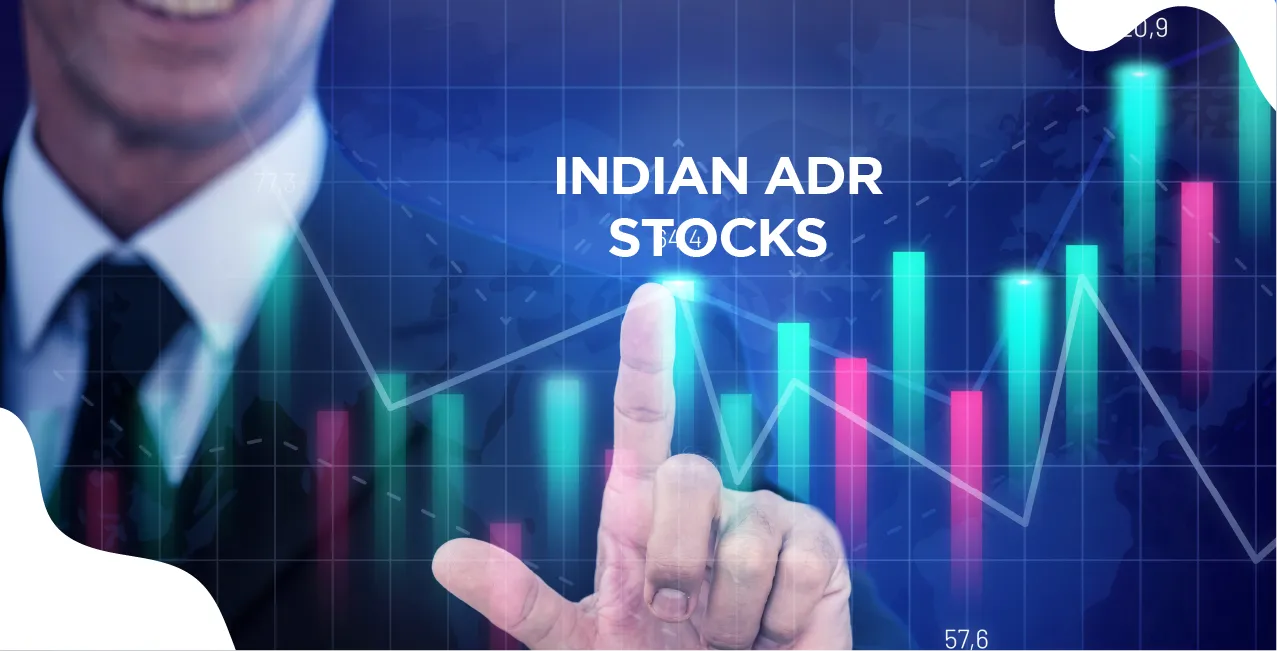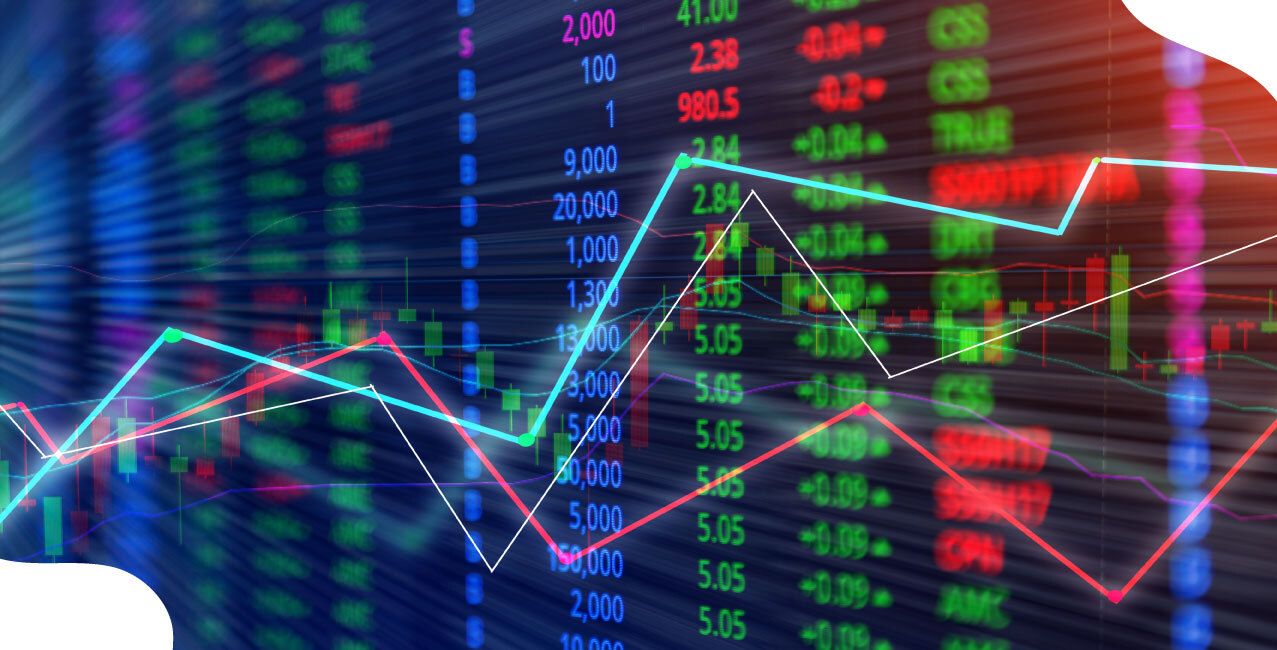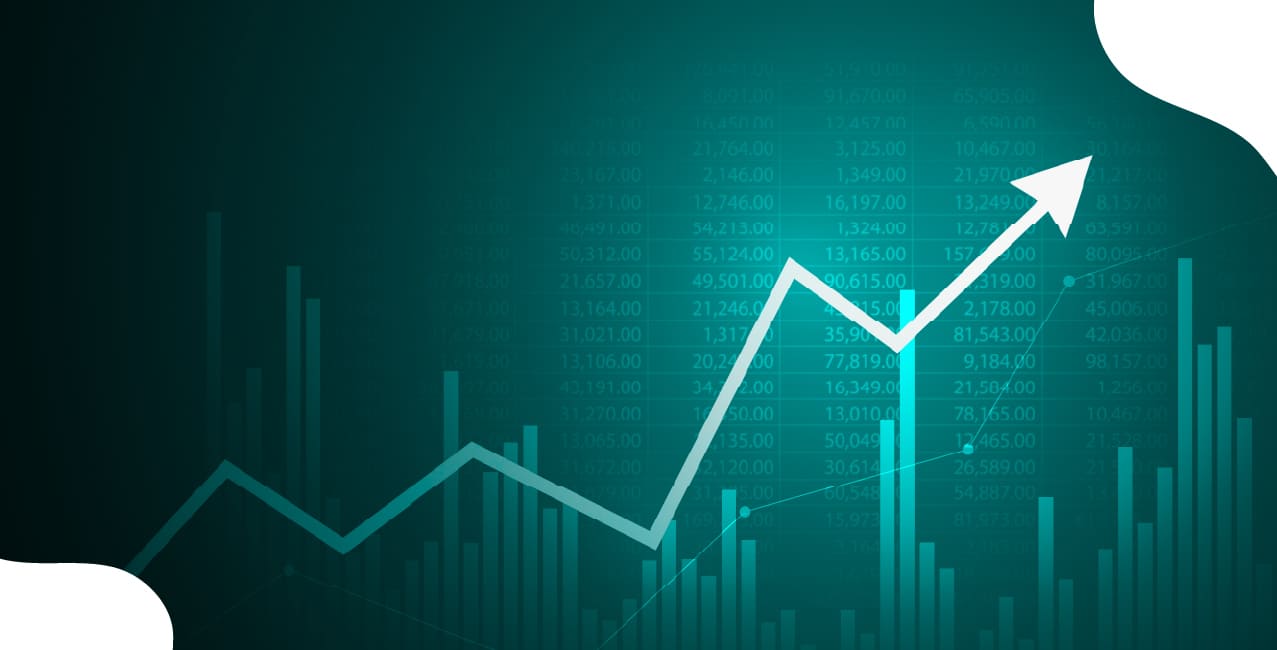
Author
LoansJagat Team
Read Time
6 Min
24 Jun 2025
Indian ADR Stocks – Top Listed Companies & Investment Guide
In 2023, 29-year-old Rishabh Sharma from Delhi invested $2,000 in Infosys ADRs listed on the NYSE. At $17 per share, he purchased 117 shares. When the price increased to $20 within six months, he realised a profit of $351 (excluding fees), earning 17.5% in dollar terms, which is higher than the Nifty 50 during the same period.
American Depositary Receipts (ADRs) enable Indian companies to raise capital and list on U.S. exchanges, providing global investors with easier access. For Indian investors, ADRs offer a route to dollar-denominated returns, improved liquidity, and international exposure.
What are ADRs?
ADRs are foreign stocks traded on U.S. exchanges in USD. They are issued by a U.S. bank representing shares of a foreign company. Indian ADRs like Infosys and ICICI Bank allow seamless global exposure to India’s economic growth.
Priya Menon, a finance student from Mumbai, explained ADRs in her thesis: If an Indian company like Wipro issues ADRs at $10 while trading at ₹800 in India, 1 ADR might represent 2 local shares. So if a U.S. investor buys 100 ADRs, it’s equivalent to owning 200 Indian shares. This bridging mechanism allows dual market access.
Benefits of Investing in Indian ADR Stocks
Investing in Indian ADRs (American Depository Receipts) can offer Indian investors, especially NRIs and global portfolio seekers, a strategic edge by providing access to international markets while staying connected to Indian growth stories. ADRs represent shares of Indian companies that are traded on U.S. stock exchanges like the NYSE and NASDAQ, giving investors the best of both worlds: Indian market exposure and U.S. market convenience.
Here are the key benefits explained in detail:
1. Diversification in a Global Portfolio
ADRs allow investors to diversify their portfolios by including Indian companies in their U.S.-based holdings. This is particularly useful for investors who live in the U.S. and wish to invest in India without dealing directly with Indian stock exchanges or regulations. It also enables global investors to benefit from the high-growth potential of emerging markets like India while maintaining a developed-market investment environment.
Read More – How to Invest in US Stocks from India
For example, holding both Apple Inc. and Infosys ADRs in the same brokerage account allows an investor to balance exposure between tech in developed and emerging markets.
2. Dollar-Based Returns (Hedging Against INR Depreciation)
One of the biggest advantages of ADRs is that returns are in U.S. dollars. This offers a natural hedge against the depreciation of the Indian Rupee (INR). If the INR weakens against the dollar—as it has historically done—your returns in INR terms get a boost, even if the ADR's performance in dollar terms is flat or modest.
This currency effect can significantly increase the value of your investment when converting returns to INR or repatriating them to India. It’s particularly attractive to NRIs or investors earning/spending in USD.
3. Access to U.S. Regulations & Disclosures
ADRs are governed by the rules and disclosures mandated by the U.S. Securities and Exchange Commission (SEC). This means that listed Indian companies have to follow high standards of transparency, financial reporting, and corporate governance. As a result, investors gain access to timely and credible information, which is often seen as more stringent than many emerging market disclosure standards.
This makes ADRs especially appealing to institutional and risk-conscious investors who prioritise regulatory safeguards.
Read More - Invest in US Stocks From India
4. Liquidity and Price Discovery via NYSE/NASDAQ
ADRs are traded on major U.S. stock exchanges such as the NYSE and NASDAQ, which are among the most liquid and efficient markets in the world. This ensures better price discovery, ease of buying/selling, and tighter bid-ask spreads. Investors can take advantage of U.S. trading hours and volatility patterns, and they can place orders just as they would for any other American stock.
This also opens the door for U.S.-based traders to include Indian companies in algorithmic or high-frequency trading strategies.
Example: Karan Patel, a 35-year-old NRI living in New Jersey, wanted exposure to Indian banking without dealing with the complexities of investing directly in India. In March, he invested $5,000 in HDFC Bank ADRs, priced at $60 per share. Over the next 10 months, the ADR appreciated to $69 per share—a 15% return in dollar terms.
But that wasn’t all. When he invested, the INR was at ₹82 per USD. By the time he sold, it had depreciated to ₹87 per USD. When converting his returns to INR, the rupee depreciation added another layer of gains, increasing his overall return to approximately 21% in INR terms.
What began as a strategic investment decision ended up significantly boosting his repatriated wealth, thanks to both stock appreciation and currency movement.
List of Popular Indian ADR Stocks
Sneha Iyer from Bengaluru created a diversified ADR watchlist. She invested $1,000 each in:
- Infosys (INFY): $17 -> $19 (11.8% gain)
- ICICI Bank (IBN): $22 -> $25 (13.6% gain)
- Wipro (WIT): $5 -> $5.4 (8% gain)
Top Indian ADRs:
Company | Market Cap (₹ Cr) | P/E Ratio (TTM) | Dividend Yield (%) | 1‑Year Return (%) | |
Infosys | 6,66,793 | 24.87 | 2.69 | 117.9 | |
Wipro | 2,68,000 | 20.48 | 2.34 | 18.43 | |
ICICI Bank | 10, 20,000 | 20.11 | - | 312.05 | |
HDFC Bank | 14,95,000 | 21.11 | 1.13 | 376.60 | |
Dr. Reddy’s | ₹1,12,551 | 19.9 | 0.59 | +11.9 | |
Tata Motors | ₹2,71,103 | 11.33 | 0.82 | –260.3 |
Disclaimer: This data is taken from Google Finance.
How to Invest in Indian ADRs?
Ajay Verma, an Indian investor living in Texas, used his Charles Schwab account to invest $3,000 in Tata Motors ADR at $25 per share. The process took less than 10 minutes. After 6 months, the price rose to $28, resulting in a profit of $360 (12%), excluding brokerage and taxes.
Steps to Invest in Indian ADRs:
Also Read – Buy US Stock in India
- Choose a Broker
Open an international trading account with platforms like:- Charles Schwab
- TD Ameritrade
- Interactive Brokers
- Charles Schwab
- Fund Your Account
- Use the Liberalised Remittance Scheme (LRS) route.
- You can remit up to $250,000 per year from India for overseas investments.
- Use the Liberalised Remittance Scheme (LRS) route.
- Search for Indian ADRs
- Use ticker symbols such as:
- INFY (Infosys)
- HDB (HDFC Bank)
- TTM (Tata Motors)
- INFY (Infosys)
- Use ticker symbols such as:
- Place Your Order
- Enter the quantity and price
- Submit and confirm the order
- Enter the quantity and price
- Track & Manage Investment
- Monitor stock performance regularly
- Review your portfolio for growth and diversification
- Monitor stock performance regularly
Challenges and Risks
Ravi Joshi bought HDFC Bank ADRs at $65 in early 2021. Due to regulatory changes and delisting talks, the ADRs dropped to $57. His $6,500 investment lost 12.3% value in 9 months.
Risks include:
- Currency fluctuations
- Regulatory changes (e.g., delisting)
- Liquidity concerns for certain ADRs
- Taxation complexities
Who Should Invest in Indian ADRs?
Anusha Krishnan, an Indian software engineer in Boston, allocated 25% of her stock portfolio to Indian ADRs for home-country exposure. Her ADR segment grew 18% in one year, outperforming her S&P 500 holdings.
Ideal for:
- NRIs want exposure to the Indian market
- Indian residents using the Liberalised Remittance Scheme (LRS)
- Dollar-earning professionals seeking a hedge against INR
- Global investors bullish on India’s growth story
Taxation on Indian ADRs
When Rohit Kumar sold his $10,000 worth of ICICI Bank ADRs after a $1,200 gain, he paid 15% U.S. capital gains tax ($180). If he were an Indian resident, he would need to declare it under Indian income tax and claim double taxation relief.
Key Points:
- U.S. taxes both dividends and capital gains
- Indian residents must declare foreign income under Indian tax laws
- DTAA (Double Taxation Avoidance Agreement) applies
- Consulting a tax advisor is recommended for accurate filing
Final Thoughts: Should You Buy Indian ADRs?
Indian ADRs offer a compelling blend of Indian growth potential with the safety and transparency of U.S. markets. For globally aware investors, especially NRIs and dollar earners, ADRs can be a smart addition to a diversified portfolio.
Also Read - How to Buy US Stock in India
Divya Nair, a finance blogger in Singapore, tested ADRs with $2,000 in Wipro. In 8 months, she made a 14% return. She highlighted the benefit of U.S. liquidity, INR hedging, and simpler taxation (for NRIs).
FAQs
- Can Indian residents invest in ADRs?
Yes, via RBI’s LRS route (up to $250,000/year).
- Are ADRs safer than Indian stocks?
Not necessarily safer, but they offer better regulatory transparency.
- Do ADRs pay dividends?
Yes, but they may be subject to U.S. withholding tax.
- Will Indian ADRs be delisted?
Some like HDFC Bank plan delisting due to regulatory changes, so always check updates.
- What's the minimum investment for ADRs?
As low as the cost of 1 share (e.g., $10) + brokerage fees.
Other Informative Pages | |||
About the Author

LoansJagat Team
‘Simplify Finance for Everyone.’ This is the common goal of our team, as we try to explain any topic with relatable examples. From personal to business finance, managing EMIs to becoming debt-free, we do extensive research on each and every parameter, so you don’t have to. Scroll up and have a look at what 15+ years of experience in the BFSI sector looks like.

Quick Apply Loan
Subscribe Now
Related Blog Post


